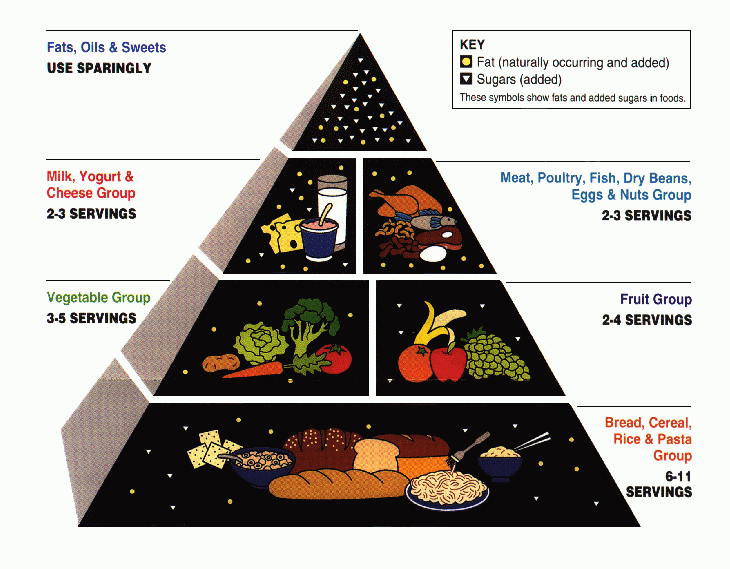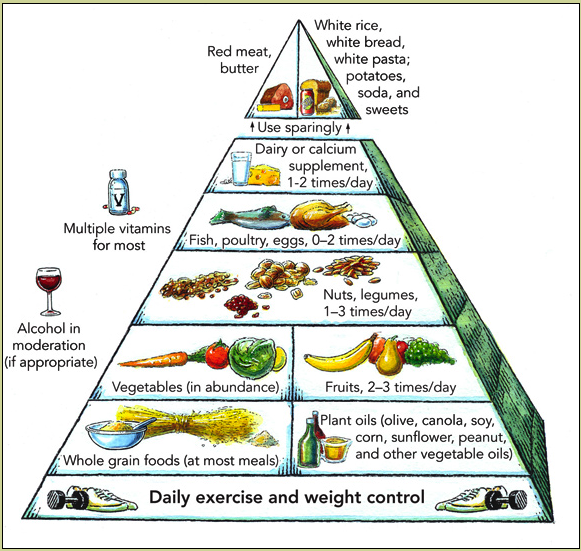A “food pyramid” is a set of dietary guidelines designed to provide optimal nutrition for U.S. citizens. There are two primary food pyramids in use today:
1. The Improved American Food Guide Pyramid published by the United States Department of Agriculture in 1992 (click on image to enlarge)
2. The Healthy Eating Pyramid developed by the Harvard School of Public Health in 2001 as a response to – and criticism of – the USDA’s food pyramid (click on image to enlarge)
As a counter-response, the USDA teamed up with the U.S. Department of Health and Human Services and developed the Dietary Guidelines for Americans in 2005 along with its new public health initiative, the MyPyramid.gov website.
The USDA/HSS MyPyramid.gov website has received more than 5.7 billion hits and averages over 750,000 page views each day. So while the Harvard healthy eating pyramid enjoyed a brief surge of popularity, it was quickly eclipsed by the newly-revised U.S. government food pyramid which has become the dominant nutritional framework in use today.
The key point to emphasize here is that the current 2005 Dietary Guidelines (and by extension the MyPyramid website and food recommendations) have been very influential in shaping public policy.
And the upcoming 2010 Dietary Guidelines will be especially critical in helping shape any governmental health care reform.
So what can we expect in 2010?
Based on the advisory committee meetings to date, grain-based carbohydrates will continue to be a substantial element of the 2010 Guidelines with a continued de-emphasis on consuming animal-based products such as meats, eggs, and saturated fats. In fact, all recommendations with regards to animal protein will now be made by the newly formed Carbohydrates and Protein Subcommittee (formerly just the Carbohydrate Committee).
Given this, I believe we can expect the following:
– An increased emphasis on complex, “nutrient-rich” carbohydrates
– An increased emphasis on high fiber food sources
– An increased emphasis on plant-based proteins
– A decreased emphasis on animal-based proteins
In other words, more beans and soy, less meat and eggs, and plenty of bad carbohydrates as long as they’re the “whole grain” variety.
The key takeaway here is that the USDA/HSS Guidelines and resulting food pyramid are the products of scientists, nutrition experts, staff members, and consultants with specific political and research agendas. And just as important, many of these individuals are subjected to intense lobbying efforts from a variety of food industries.
Bottom line, don’t look to the USDA/HSS food pyramid to necessarily offer the best advice on how to optimize your nutrition and health – especially since it’s coming from a committee that talks about how it “needs to develop a new way to frame messages about carbohydrates.”


2 Replies to “Food Pyramids: What They Are and Why You Should Avoid Them”